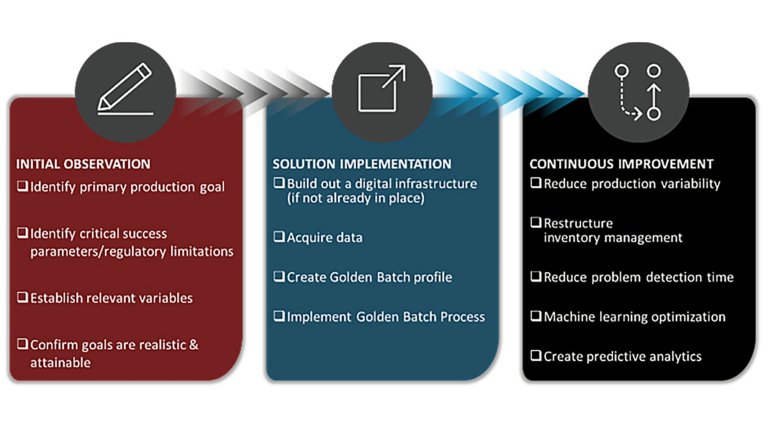3. Continuous Improvement. Unlike the implementation phase, continuous improvement of the Golden Batch profile doesn't have to be sequential. Over time, continuous improvement activities optimize the Golden Batch profile, yielding more and more value to manufacturers. Continuous improvement is goal-driven, ensuring each batch iteration replicates the conditions required for an ideal output.
Over time, the information and insights gathered can be used to understand other parts of the manufacturing process or as inputs to complex autonomous batch modeling solutions using machine learning and model predictive control (MPC).
At the tortilla manufacturer’s production facility, the results from the Golden Batch implementation served as a pathway to continuous improvement into the future. This led them toward predictive analytics and predictive maintenance, and will eventually pave the way for the use of MPC — the next natural step to an autonomously updated batch model.
4. Results. This tortilla manufacturer achieved numerous positive outcomes from using Golden Batch manufacturing, including:
- 72% reduction in error from the current batch formulation model to the optimized Golden Batch model.
- 6.6% improvement in median product quality.
- Minimum 27% quality improvement toward the target metric in 5.5% of the lowest-quality final products.
Is Golden Batch Right for You?
When considering Golden Batch for your manufacturing process, consider three key criteria that can make the process more likely to succeed.
1. Consistency. Golden Batch works best in static manufacturing environments with consistent inputs. It's an impractical solution to apply to manufacturing processes with constantly changing input or output conditions that would require frequent alterations. For processes that fall outside of ideal conditions for Golden Batch, MPC is recommended; it's an autonomous modeling solution to drive consistent quality products through complex and changing input variables.
2. Expert Insight. While Golden Batch can provide insight into critical process parameters and variables, it doesn't connect to automation systems for actuation or input parameter adjustment. After the influential variables are identified, vetting by a company's process experts will confirm the relationships are, in fact, causal. Making process changes because of Golden Batch insights will remain the responsibility of manufacturing experts. After significant relationships are determined and verified over time, the solution can evolve to integrate with some closed-loop control systems.
3. Architecture. Implementing and achieving results from a Golden Batch solution can become increasingly time- and resource-intensive if the necessary sensing, control and data storage infrastructure is not in place. Prior to investing in Golden Batch, ensure that manufacturing process data can be accessed and organized in a usable format for a Golden Batch profile.
Laying the Foundation
If your manufacturing process and related infrastructure meet the criteria described, you might determine that Golden Batch is the right solution to apply to your manufacturing process. It's a powerful tool that leverages existing data to provide new insights, enabling you to achieve and maintain optimal product quality, and in turn, reduce costs, increase revenue and improve customer satisfaction.
Kalypso: A Rockwell Automation business, is a professional services firm that provides consulting, digital innovation, technology, business process management and managed services across the innovation value chain.
Like this article? Sign up for the digital magazine) of The Journal From Rockwell Automation and Our PartnerNetwork and get articles like this delivered right to your inbox.
The Journal From Rockwell Automation and Our PartnerNetwork™ is published by Endeavor Business Media.



